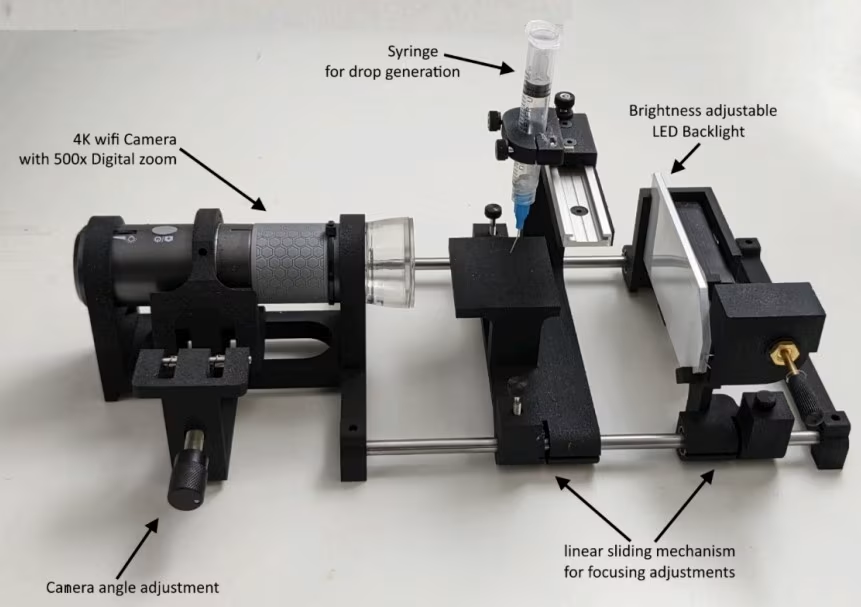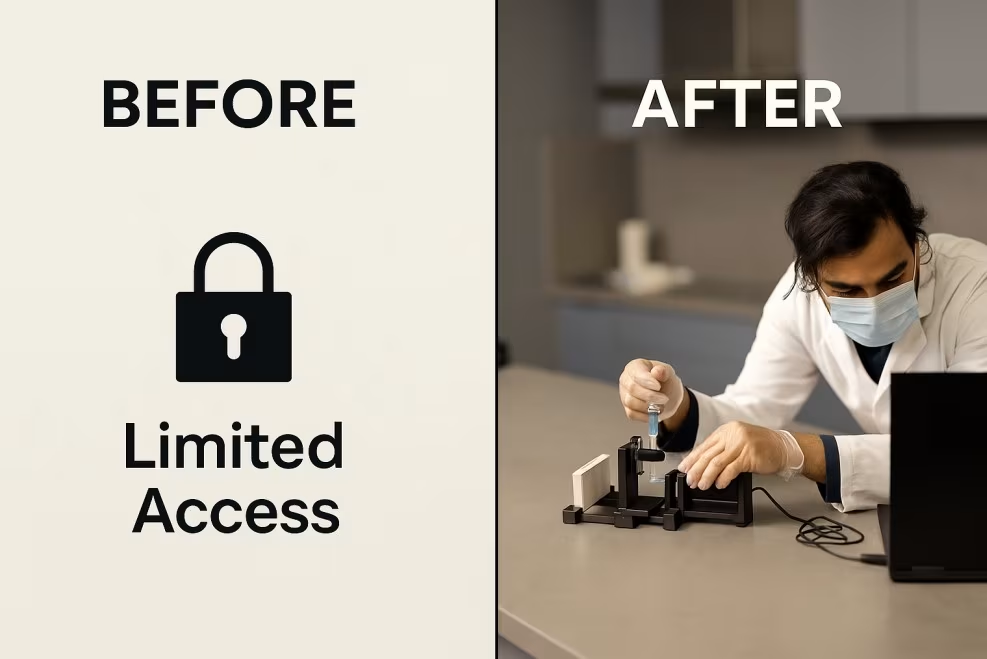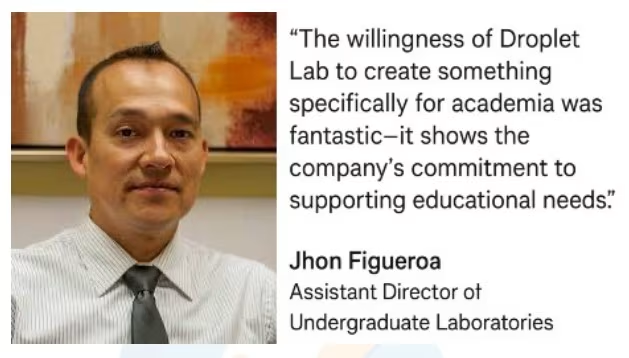Seeking to make surface science more engaging and accessible, USF partnered with Droplet Lab to introduce a customized tool specifically designed for undergraduate education. The partnership successfully bridged the gap between theory and practice, giving students direct, hands-on experience with professional-grade experiments and redefining best practices for experiential chemistry education.
USF’s chemistry teaching labs for undergraduates navigated a tough hurdle despite its strong academic foundation. The challenge was to make advanced scientific concepts relatable and exciting for undergraduates. This dilemma is common across STEM education, particularly in surface science. For many students, the subject is an abstract topic that was taught largely through lectures and textbook readings. With no real experimental setups, they found the subject either lacklustre or too complex.

Complicating matters further, commercially available instruments carried price tags that didn’t fit the department’s means. The high cost of many laboratory-grade goniometers and related systems effectively restricts access to a select few research students at the graduate level. The university’s chemistry department needed a way to democratize access and bring advanced scientific instrumentation into the hands of large undergraduate cohorts without sacrificing performance. With these challenges at their back, USF chose Droplet Lab as a partner. Drawn by the company’s reputation for creating innovative and affordable scientific solutions, USF chemistry department undergraduate teaching labs picked Droplet Lab for its flexibility and ability to customize systems to specific client needs.
Droplet Lab understood early on that adapting an existing product would not be enough to meet USF’s needs. Instead, they set out to design a new instrument from the ground up that could deliver reliable performance, hold up to frequent use, and stay affordable for large-scale undergraduate labs, all without compromising scientific accuracy.

Smartphones introduced too much variability and maintenance complexity, so the team replaced mobile capture with a simple, robust camera system paired with a desktop computer for processing and analysis.
The design team worked to create an instrument that could withstand heavy classroom use, feature an intuitive UI, and allow for basic maintenance by university staff. Materials and components were carefully selected to keep costs under the $1,000 per-unit budget cap.
Once the design was finalized, Droplet Lab’s hardware engineer and software teams led the production and integration process. Dr. Jhon, USF’s Assistant Director of Undergraduate Laboratories, got direct feedback at every stage. Over a three-month development timeline, both teams worked closely to prototype, assess, and refine the instrument.
The system’s transition into the undergraduate teaching labs was completed within an additional month, overcoming minor logistical roadblocks tied to university-wide technology upgrades. By the end of the implementation phase, the university had purchased 33 customized kits for approximately $30,000, drastically improving the student-to-instrument ratio.
Moreover, the instruments were designed with modular, easily replaceable parts, enabling the department to handle maintenance in-house. This design approach helped ensure investment longevity and minimized future operating costs.
Based on informal feedback, students produced accurate results, analyzed their own data, and formed independent conclusions about material wettability. Their ability to freely explore the device deepened understanding and boosted confidence in experimental techniques.
The department sees this initiative as a way to keep students engaged in STEM, strengthen research skills, and better prepare them for advanced study or careers.


Droplet Lab was founded in 2016 by Dr. Alidad Amirfazli, faculty member at York University, and two of his researchers, Dr. Huanchen Chen and Dr. Jesus L. Muros-Cobos.
Dropletlab © 2024 All Rights Reserved.